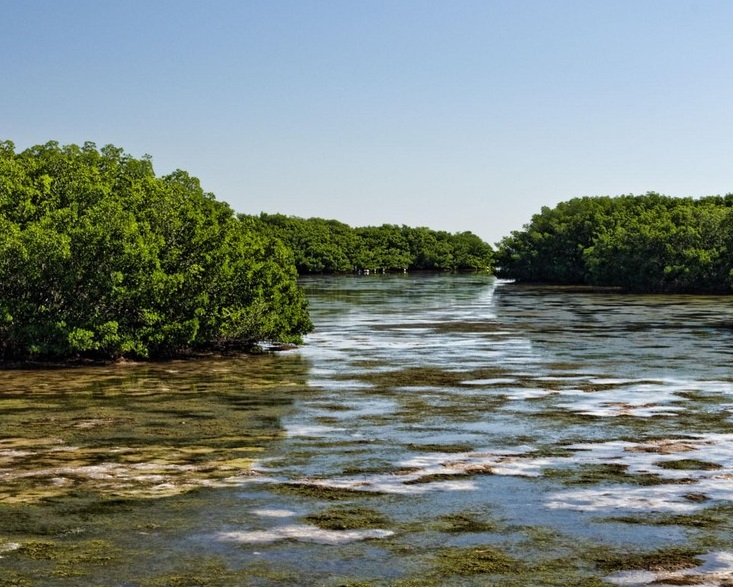Prior to the 1980s, many of Tampa Bay’s habitats were damaged, reduced, or lost during development activities. Once the value of these habitats was recognized, protections were put in place and monitoring began on a regular basis to understand the effectiveness of different conservation and restoration activities.

Current Trends
When viewed as a whole, the most significant and meaningful trends in the TBEP habitats of interest over the periods of record examined include: 1) the 79% gain in seagrasses from 1988 to 2016; 2) the gains in both emergent tidal wetlands (14% gain in mangroves, 2% gain in salt marshes) and freshwater wetlands (31% gain) between 1990 and 2023; and 3) the 40% loss in native upland habitats from 1990 to 2023.
The increasing trend in seagrass coverage is a testament to improved bay water quality. While some recent gains in seagrass coverage have been erased, the remaining seagrasses still reflect improvements in water quality over the past several decades and still serve as an important guidepost for successful restoration of those subtidal habitats. Seagrass losses in the upper bay segments accompanied by increases in attached algae are being studied to understand the importance of these changes.
Subtidal land use change from 1988 to 2024 (acres and % change)
True change analysis, subtidal habitats (all categories) from 1988 (left) to 2024 (right)
The intertidal habitat gains demonstrate the effectiveness of publicly-funded habitat restoration projects (see Habitat Restoration tab) and state and federal wetland regulatory programs. Increases in salt barrens may also reflect a landward expansion associated with sea level rise. However, a 54% increase for developed lands and 25% loss for restorable lands in the watershed is a concern for continued habitat restoration and protection. A loss of upland habitats is the result of continued human population growth and urban development in the Tampa Bay watershed, and unless local protections for native upland habitats improve, this trend will likely continue.
Watershed land use change from 1990 to 2023 (acres and % change)
True change analysis, watershed land use from 1990 (left) to 2023 (right)
Seagrasses in Tampa Bay
Seagrasses are used by the Tampa Bay Estuary Program to assess progress in achieving water quality goals. Seagrasses need sunlight to grow. With improving water clarity, seagrasses can thrive in Tampa Bay.
Areal coverage of seagrasses are tracked semi-annually to determine if they are increasing or decreasing over time. From 1988 to 2016, seagrasses increased by 18,370 acres. However, from 2016 to 2024, seagrasses decreased by 10,092 acres. Most significant seagrass losses were in Old Tampa Bay, a segment that has not been meeting water quality targets in recent years. Notably, seagrasses increased from 2022 to 2024 baywide, although losses were still observed in Old Tampa Bay.
